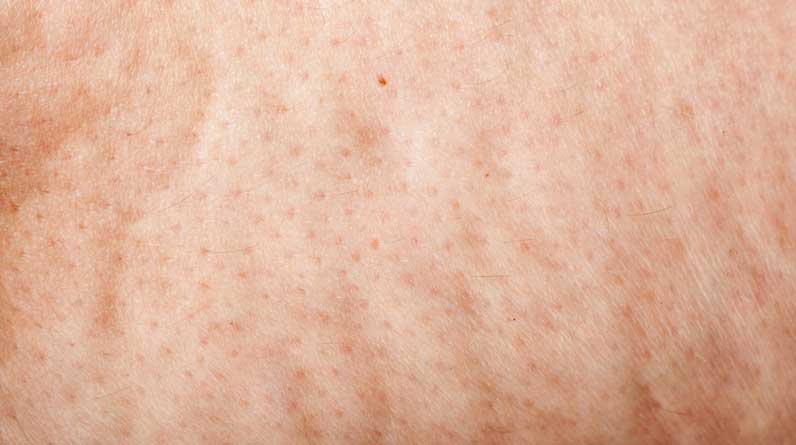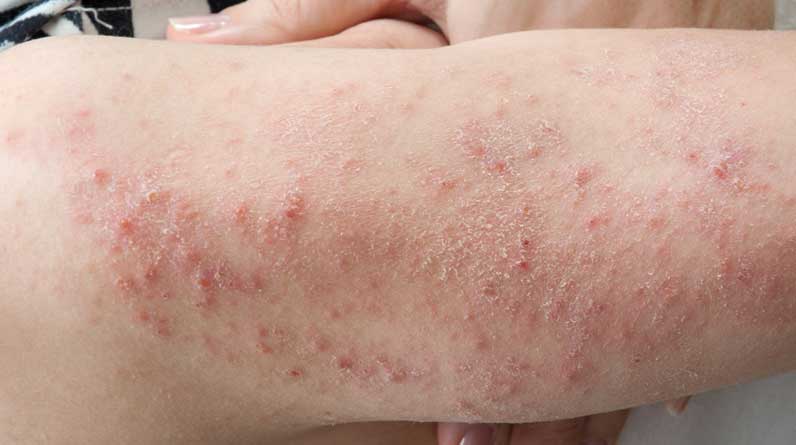
Subcutaneous Tissue
Subcutaneous tissue, otherwise known as the hypodermis or superficial fascia, is defined as the deepest layer of tissue that underlies the skin. Its structure contains subcutaneous fat as well as various cell entities.
As a primary function, subcutaneous tissue is of particular importance. It provides support to the blood vessels, nerves, and glands of the body and connects the dermis (middle layer of the skin) to muscles and bones. In essence, subcutaneous tissue is the padding of the body, acting as a protective layer.
Many conditions can develop in this layer of the skin, but the problem is that this area is not as easily accessed for treatment of these conditions. To reach this area for treatment can often mean a minor or possibly major procedure. As such, subcutaneous tissue disorders can become a serious problem.
It’s time to learn about the numerous medical conditions that arise in the subcutaneous layer of the skin.
What Makes Up The Skin?
Layers of The Skin
The subcutaneous tissue is part of three major layers of the skin:
- The Epidermis: Outer layer of the skin.
- The Dermis: Middle layer of the skin.
- Subcutaneous Tissue: The deepest layer of the skin.
The subcutaneous tissue, which is made up of many veins and blood vessels, has much importance and functionality.
Importance of Subcutaneous Tissue
The subcutaneous tissue, which is made up of many blood vessels, nerves, and connective tissue, has much importance and functionality.
Subcutaneous tissue plays a key role in the overall smoothness of our body’s appearance. It also stores fat cells, helps facilitate the attachment of muscles and bones, and thermoregulates our bodies.
Without subcutaneous tissue, our body’s equilibrium would be thrown out of order. As you can imagine, subcutaneous tissue disorders can cause many problems that interfere with the natural defenses of the body.
Subcutaneous Tissue Disorders
Certain medical conditions can interfere with this solid protective layer of the skin. These conditions range from skin burns and inflammatory disorders to skin abscesses, tumors, and ulcers.
- Skin Burns: Most burns of the skin involve the superficial layers of the skin; however, the types of skin burns that are the most dangerous are deep burns, known as third-degree burns. These types of burns extend into the subcutaneous layer of the skin. Often exposure to fire or hot grease can lead to burns of this nature. When burns of this type are quite extensive, they can be life-threatening.
- Inflammatory Disorders: An example is Hidradenitis Suppurativa which involves the development of inflamed areas or boils in the subcutaneous tissue. These areas can often get infected and develop chronic drainage.
- Skin abscess: This is a fluid collection of purulent material or puss. A Simple incision should drain such a medical case.
- Tumors: Some of these subcutaneous tissue growths can be benign, and others can be cancerous. In each case, tumors are typically treated via surgical removal.
- Ulcers: An ulcer is simply a wound or skin sore of sorts. When spread down to the subcutaneous layer of the skin, ulcers can become a serious problem.
Other disease processes such as subcutaneous adipose tissue diseases are seen in those living with obesity. Examples of these adipose diseases include Dercum disease, lipedema, familial multiple lipomatosis, and Madelung disease.
Other miscellaneous deep layer skin conditions include cellulite (a simple structural skin disease), Leprosy, Mastocytosis, and Lipomas.
Common Treatments
Subcutaneous tissue disorders treatment includes:
- Excision of the lesion – this can be utilized in the case of a lipoma or other subcutaneous tumor growth.
- Surgical debridement – this is utilized in the case of third-degree burns and ulcers that extend into the subcutaneous tissue layer.
- Incision and drainage – this is utilized in cases of deep subcutaneous abscesses, such as happens with deep hair follicle infections.
Some subcutaneous skin conditions will often resolve and not require specific treatment. The underlying healing condition will simply scar over time.
Final Thoughts
Subcutaneous tissue is defined as the deepest layer of skin, and it’s largely comprised of adipose fat cells and connective tissue. This is where the majority of fat is stored in our bodies. Many times, those that are overweight or obese have a higher risk of developing subcutaneous tissue disorders.
Treatments are widely available for many of the subcutaneous skin disorders, and it’s best to consult with a physician to determine the best treatment plan for any of these conditions.






